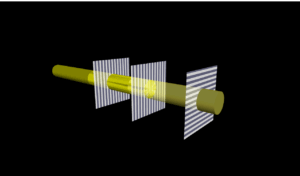Light Reflection & Refraction Simulation
Interactive demonstration of Snell's Law and the physics of light behavior at material interfaces
Example
Question:
(a) When monochromatic light is incident on a surface separating two media, the reflected and refracted light both have the same frequency as the incident frequency. Explain why?
(b) When light travels from a rarer to a denser medium, the speed decreases. Does the reduction in speed imply a reduction in the energy carried by the light wave?
(c) In the wave picture of light, intensity of light is determined by the square of the amplitude of the wave. What determines the intensity of light in the photon picture of light?
Solution:
(a) Reflection and refraction involve interaction of incident light with atomic constituents of matter. Atoms act as oscillators that take up external light frequency, causing forced oscillations. The frequency of emitted light equals oscillator frequency; thus, reflected and refracted light have the same frequency as incident light.
(b) No. The energy carried by a wave depends on amplitude, not on speed of propagation.
(c) For a given frequency, intensity of light in the photon picture is determined by the number of photons crossing a unit area per unit time.
Physics Principles
Snell's Law: n₁ sin(θ₁) = n₂ sin(θ₂)
Law of Reflection: Angle of incidence equals angle of reflection
Total Internal Reflection: Occurs when light travels from denser to rarer medium at angles greater than the critical angle

